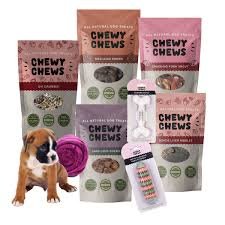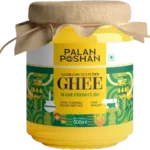What Freeze Drying Actually Means
Freeze drying sounds fancy, but the concept is straightforward. Raw ingredients are frozen solid, then placed in a vacuum chamber where the ice crystals turn directly into vapor without becoming liquid first. This process removes nearly all the moisture while keeping the nutritional value and flavor intact.
The result is a lightweight, shelf-stable treat that maintains the benefits of raw food without the hassle of refrigeration or the risks that come with feeding raw. When you rehydrate freeze dried treats, they return to something close to their original texture and appearance.
This preservation method has been around for decades, originally developed for astronauts. Now it’s become popular in the pet food world, and for good reason.
Why Dog Owners Are Switching to Freeze Dried Treats
Walk down the treat aisle at any pet store and you’ll see dozens of options. Biscuits, jerky, training treats, dental chews. So why are freeze dried treats gaining so much attention?
Nutritional Value That Stays Put
Traditional treat processing involves heat, which destroys vitamins, enzymes, and other nutrients. Freeze drying keeps these intact. Your dog gets the full nutritional benefit of the raw ingredients.
Protein remains in its natural form, which is easier for dogs to digest and use. If you’re feeding a high-quality diet, you probably want treats that match that standard instead of undermining it with junk food.
Clean Ingredient Lists
Pick up a bag of freeze dried treats and check the ingredients. You’ll typically find one or two items, maybe three. Chicken. Sweet potato. Beef liver. That’s it.
Compare that to conventional treats loaded with fillers, artificial flavors, preservatives, and ingredients you can’t pronounce. Freeze dried treats don’t need additives because the preservation process itself keeps them fresh.
Allergy-Friendly Options
Dogs with food sensitivities or allergies need treats that won’t trigger reactions. With freeze dried treats offering single-ingredient options, it’s easy to avoid problem foods.
If your dog can’t have chicken, grab beef. Can’t do common proteins? Try novel proteins like rabbit or duck. The variety available in freeze dried form makes it simple to find something that works.
Types of Freeze Dried Dog Treats
Not all freeze dried treats are created equal. Understanding the categories helps you choose what fits your dog’s needs.
Single-Ingredient Proteins
These are pure meat treats. Freeze dried chicken breast, beef liver, salmon, turkey, lamb. Nothing added, nothing taken away except moisture.
These treats are perfect for training because they’re high-value rewards that dogs go crazy for. They’re also ideal for dogs with sensitive stomachs or strict elimination diets.
Organ meats like liver and heart are particularly nutrient-dense. Dogs naturally crave these, and freeze dried versions deliver concentrated nutrition in every bite.
Fruits and Vegetables
Yes, freeze dried treats include plant-based options. Sweet potato, pumpkin, green beans, and various fruits make healthy, low-calorie treats.
These work well for dogs who need to watch their weight but still deserve treats. They also provide different nutrients than meat treats, adding variety to your dog’s diet.
Some dogs absolutely love freeze dried fruit. The natural sweetness appeals to them, and the crunchy texture is satisfying.
Combination Treats
Some freeze dried treats mix proteins with vegetables or fruits. You might find chicken with blueberries, beef with sweet potato, or salmon with pumpkin.
These offer balanced nutrition in one treat and can be more interesting for dogs who get bored with the same flavors. They’re also good for dogs who benefit from the additional fiber or specific nutrients in the added ingredients.
How to Use Freeze Dried Treats
The versatility of freeze dried treats is part of their appeal. They work in multiple situations and can be prepared different ways.
As-Is for Training
Right out of the bag, freeze dried treats are lightweight and easy to carry. Break them into small pieces for training sessions. They don’t leave greasy residue on your hands or in your pockets like some traditional treats.
Because the flavor is so concentrated, even tiny pieces motivate dogs. This means you can give lots of rewards during training without overfeeding.
Rehydrated for Meals
Add water to freeze dried treats and they plump back up into something resembling fresh food. This makes them great toppers for kibble when you want to make meals more appealing.
Some dogs, especially picky eaters or seniors with dental issues, prefer softer foods. Rehydrating freeze dried treats gives them that texture while delivering serious nutrition.
Enrichment and Mental Stimulation
Stuff freeze dried treats into puzzle toys or use them in snuffle mats. Their strong aroma makes them perfect for scent work games that tire out your dog mentally.
You can also use them in homemade frozen treats. Mix rehydrated freeze dried meat with plain yogurt or bone broth, pour into ice cube trays, and freeze for a cooling summer snack.
Choosing Quality Freeze Dried Treats
The freeze dried treat market has exploded, which means quality varies. Knowing what to look for protects your dog and your wallet.
Source of Ingredients
Where the ingredients come from matters. Treats made from human-grade ingredients sourced from reputable suppliers are worth the extra cost. Some brands specify that their meat comes from grass-fed animals or wild-caught fish.
Avoid treats with vague sourcing or those that don’t disclose where ingredients originate. You want transparency.
Processing Standards
Look for treats made in facilities that follow strict food safety protocols. In the US, treats made in USDA-inspected facilities or those following FDA guidelines offer more assurance.
The freeze drying process itself should be done properly. Inadequate freeze drying leaves moisture that can lead to spoilage or bacterial growth.
Packaging and Storage
Proper packaging keeps freeze dried treats fresh. Look for resealable bags with oxygen absorbers or vacuum-sealed packaging.
Once opened, store treats in a cool, dry place in an airtight container. Exposure to moisture or air degrades quality over time. Most freeze dried treats last months when stored correctly, but always check expiration dates.
Cost Considerations
Let’s address the elephant in the room: freeze dried treats are expensive. A small bag can cost as much as a large box of biscuits.
But consider what you’re getting. These treats are almost pure nutrition with no filler. A little goes a long way because they’re so concentrated. Break treats into smaller pieces and suddenly that expensive bag lasts much longer.
You’re also avoiding vet bills that come from feeding low-quality treats full of artificial ingredients and allergens. Health problems are expensive. Prevention through better nutrition pays off.
Potential Concerns
Freeze dried treats aren’t perfect for every situation. Understanding the limitations helps you use them effectively.
Calorie Density
Because moisture is removed, freeze dried treats pack more calories into smaller volumes. This matters for dogs who need to lose weight or maintain a healthy weight.
Measure treats and account for them in your dog’s daily calorie intake. It’s easy to overdo it because the treats seem small.
Texture Issues
Some dogs don’t like the dry, crumbly texture of freeze dried treats. If your dog is used to soft, chewy treats, they might turn their nose up at first.
Try rehydrating treats or mixing them with something familiar. Most dogs come around once they taste how good these treats are.
Price Sensitivity
If you’re on a tight budget, freeze dried treats might not be feasible for everyday use. Consider using them for special occasions, high-value training, or as meal toppers rather than main treats.
Buying in bulk or watching for sales helps manage costs. Some brands offer larger bags at better per-ounce prices.
Special Dietary Needs
Freeze dried treats excel for dogs with specific health requirements.
Raw Feeders
If you feed raw, freeze dried treats complement that diet perfectly. They’re essentially raw food without the handling and storage challenges.
You get the enzymatic benefits and natural nutrition raw feeders value without worrying about bacterial contamination when you’re traveling or training in public.
Senior Dogs
Older dogs often have diminished appetites or dental issues. Freeze dried treats rehydrated into soft, aromatic bites can encourage seniors to eat and provide easy-to-digest nutrition.
The concentrated nutrients also benefit older dogs whose bodies might not absorb nutrients as efficiently as they once did.
Puppies
High-quality protein in freeze dried treats supports growing puppies. Just remember to adjust portions appropriately for their size and break treats into tiny pieces to prevent choking.
Making the Switch
If you’re transitioning from conventional treats to freeze dried, do it gradually. Sudden dietary changes can upset stomachs, even when the new food is higher quality.
Start by mixing freeze dried treats with current treats. Gradually increase the ratio of freeze dried to old treats over a week or two. This gives your dog’s digestive system time to adjust.
Watch for any reactions, though they’re rare with simple, clean ingredients. Most dogs transition easily and show increased enthusiasm for treat time.
Storage and Handling Tips
Proper handling keeps freeze dried treats safe and fresh. Always wash your hands after handling, especially with raw meat treats.
If you rehydrate treats, use them within a day or two and keep them refrigerated. Once moisture is added back, they’re perishable again.
Don’t leave freeze dried treats sitting in hot cars or humid environments. Heat and moisture are the enemies of freeze dried foods.
Finding Quality Options
The growing popularity of freeze dried treats means more brands are entering the market. Reading reviews and checking ingredient lists helps you find reliable options.
For a curated selection of premium freeze dried dog treats with transparent sourcing and quality ingredients, LifeGizmoHub offers varieties that meet the nutritional standards your dog deserves.
Related Reads
- How Portable DNA Sequencers Are Transforming Point-of-Care Diagnostics
- How After-Sales Service Defines a Good TV Brand
- Court Marriage Certificate Rajasthan – Complete Legal Guide by Court Marriage Jaipur Rajasthan
- Creme Eye Shadow – Elevate Your Eye Makeup with Charm Belleza’s Smooth & Long-Lasting Shades
- Top-Rated Hospital in Hyderabad | 24×7 Advanced Healthcare



